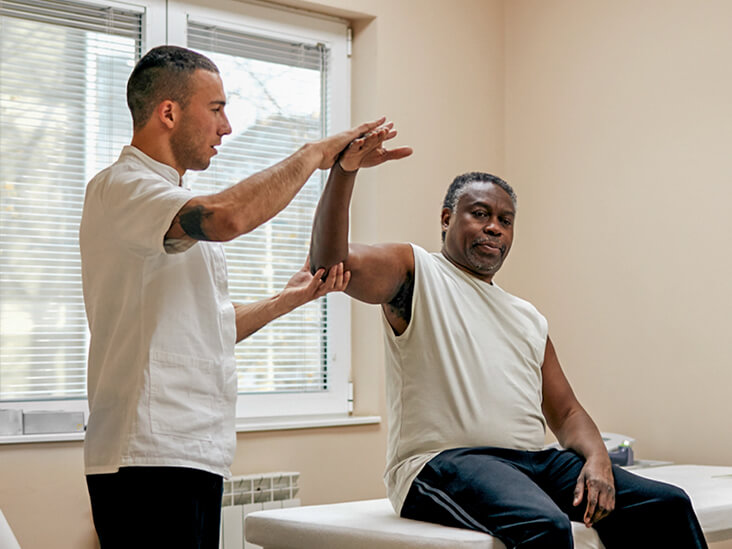Have you ever heard of “tennis elbow” before? It is a common term for a condition known as lateral epicondylitis. This nickname can be deceiving however, as many people with tennis elbow don’t actually play tennis! Read below to learn more about lateral epicondylitis, its symptoms, and how it is treated.
Related Anatomy
The lateral epicondyle is a bony projection on the outside or lateral aspect of the elbow. There is a group of muscles that all originate at the lateral epicondyle that control wrist and hand movements. These muscles include:
- Extensor carpi radialis brevis → extends (bends back/straightens) and abducts (moves outward) wrist
- Extensor carpi ulnaris → extends and adducts (moves inward) wrist
- Extensor digiti minimi → extends wrist and pinky finger
- Extensor digitorum → extends wrist and fingers
A band of connective tissue known as the common extensor tendon connects these muscles to the lateral epicondyle. When the above muscles are overused or forcefully used it causes inflammation of the tendon and therefore lateral epicondylitis. Tennis elbow can occur in any individual who repeatedly uses their elbow, wrist, or hand for daily activities, work, sports, or hobbies.
Symptoms of Tennis Elbow
Symptoms of tennis elbow include:
- Pain or burning in the forearm and/or wrist that may start at the elbow
- Pain or difficulty with holding or gripping objects
- Pain or difficulty with turning handles or opening objects (like jars or bottle tops)
- Pain or difficulty lifting heavy objects
- Elbow or wrist stiffness
- Weakness in the elbow, wrist, or hand
Treatment and the Role of Physical Therapy
In its early stages (first couple of weeks), it is important to rest the affected arm and stop aggravating activities or modify activities to be pain free. Application of ice may also be helpful to help relieve pain. In addition, exercises that improve your strength, flexibility, and joint motion can be helpful to address deficits and prevent re-injury. Physical therapy is a conservative option that is effective in treating tennis elbow and its related impairments. A physical therapist can develop a personalized plan of care to help you return back to normal functioning. This program may include:
- Manual Therapy to the elbow, wrist, or hand to increase range of motion at the joint and to surrounding muscles to reduce muscle tension
- Strengthening of muscles of the elbow, wrist, and hand, with special attention paid to the wrist extensors
- Stretching of associated muscles to increase flexibility
- Therapeutic Modalities such as ice and electrical stimulation to help
Written By: Dr. Sydney Brown, DPT
If not addressed immediately, tennis elbow can become a chronic condition that lasts for months or longer. As a result, it is important to tackle it as soon as possible! If elbow, wrist, or hand pain is limiting your ability to participate in your favorite sports, hobbies, or daily activities, call Respire Physical Therapy at (703) 671-1871 or click here to schedule an evaluation and begin the road to recovery today!
Tags: choosept, elbow pain, arlingtonva, alexandriava, fallschurchva, movement freedom, ptworks, Physical Therapy, annandaleva, physical therapist, tennis elbow, pain free living



